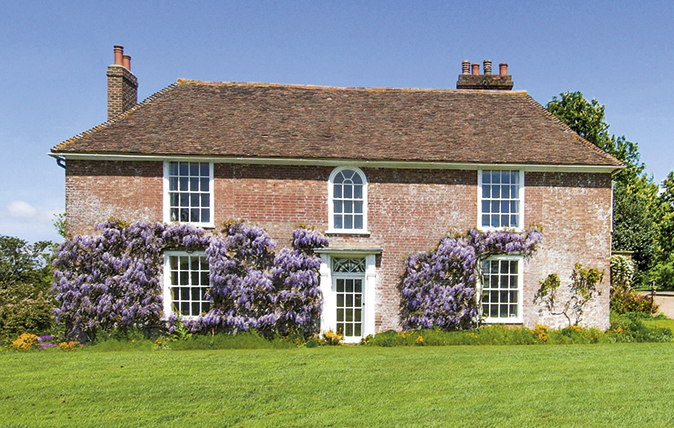Refresh your garden to sell your house
What to plant in your garden to help to sell your house


When it comes to selling a country house, a honeysuckle in flower, a wisteria in bloom or a pretty rambling rose running riot over the front façade are key to getting people through the door, believes Rupert Lawson Johnson of Strutt & Parker in Chichester. ‘They’re a massively advantageous thing to have and give an excellent first impression, be they in a window, on a brochure or as you’re walking up the path. People buy houses with the heart, even if they set the parameters with their head.’
Lindsay Cuthill of Savills country-house department agrees and says it’s especially important at this time of year. ‘Spring scents are lovely. They tell you that winter is over and to walk out onto a terrace and be assailed by scents of climbing flowers in bloom is a sensational way to set the scene of a house.’
Clever planting can also help enhance the façade of an otherwise architecturally unexciting house, adds Ben Horne of Middleton Advisors, who says that it was seeing the wisteria covering the front elevation of an ‘otherwise reasonably square and unexciting front elevation’ of a house last spring that helped convince him to proceed with the purchase. ‘It made a huge, positive effect.’
Planting a climber or a rambler can also do wonders to accelerate the maturity of a new country house, adds Rupert. ‘In my previous life as a developer, I built a 6,000sq ft house near Andover in Hampshire. When it came to dressing it for sale, I bought 16ft-high established wisteria plants from a garden centre and planted them in pots to break up the rather harsh front façade of the house. We then ran fast-growing ivy up the drainpipes and the house instantly looked more warm and lived-in.’
However, the key, warns landscape designer Marcus Barnett, is to choose a climber that will complement the colour of the stone or brickwork (www.marcusbarnett.com; 020–7736 9761). ‘Warmer-coloured Cotswold and Bath stones look particularly good with reds, pinks and lilacs, possibly mixed with more subtle-coloured climbers for contrast. Against the cooler grey of Portland stone, large purple and white clematis, such as Jackmanii and montana grandiflora, look very good either on their own or combined with some dark-leaved climbers, such as passion-flower and white jasmine.’
For a new red-brick house, Marcus says that the large leaves of a magnolia will distract the eye from the contrast between the bricks and mortar and Rosa new Dawn ‘complements mellower old bricks beautifully’.
What to plant
Exquisite houses, the beauty of Nature, and how to get the most from your life, straight to your inbox.
North-and east-facing walls
- Climbing hydrangea, Clematis montana and parthenocissus. Many clematis flower almost as well on shady walls as on sunny ones, but not all of them will spread over large areas. C. montana (spring-flowering only) grows fast and far
- Honeysuckle is a light-woodland/hedgerow plant in the wild and will flower in shade—good for cottage ambience. Be aware that honeysuckle grown in the sun can be more subject to attack by aphids and become disfigured
- Roses for shady walls include Maigold, Mme Alfred Carrière, Mme Gregoire Staechelin, New Dawn and Rambling Rector
South-and west-facing walls
- You can grow more tender things on them than would thrive on the north or east option, gene- rally speaking. Yellow Banksian rose (Rosa banksia lutea), lots of roses generally
- Grape vines and the ornamental vine Vitis coignetiae will romp away. Campsis (trumpet vines) flower in late summer and early autumn and are quick growing and showy
- Wisteria is ideal for south and west walls as the wood ripens better and flowering will be more prolific
For all wall planting
With any planting by walls, the soil needs to be well cultivated, in good heart and new plants regularly watered until well established. Nearly all climbers and ramblers need some sort of support structure, such as rows of taut wires they can be tied into as they grow. Even self-clinging species need some sort of extra support until they get established. For further information, visit www.rhs.org.uk

